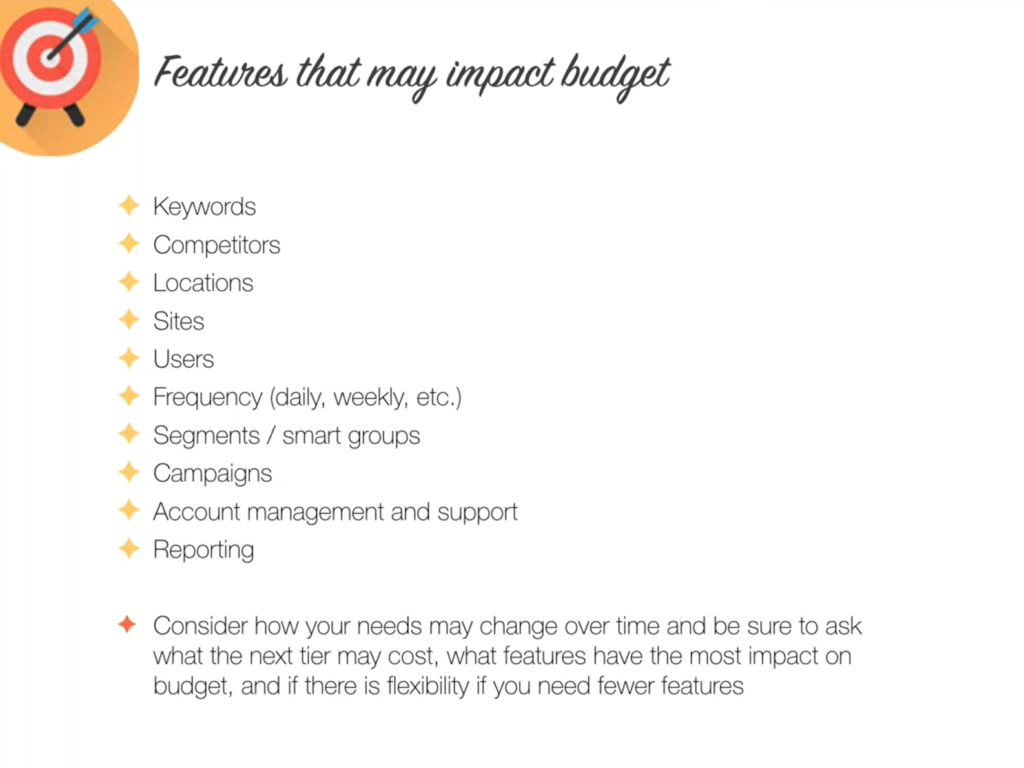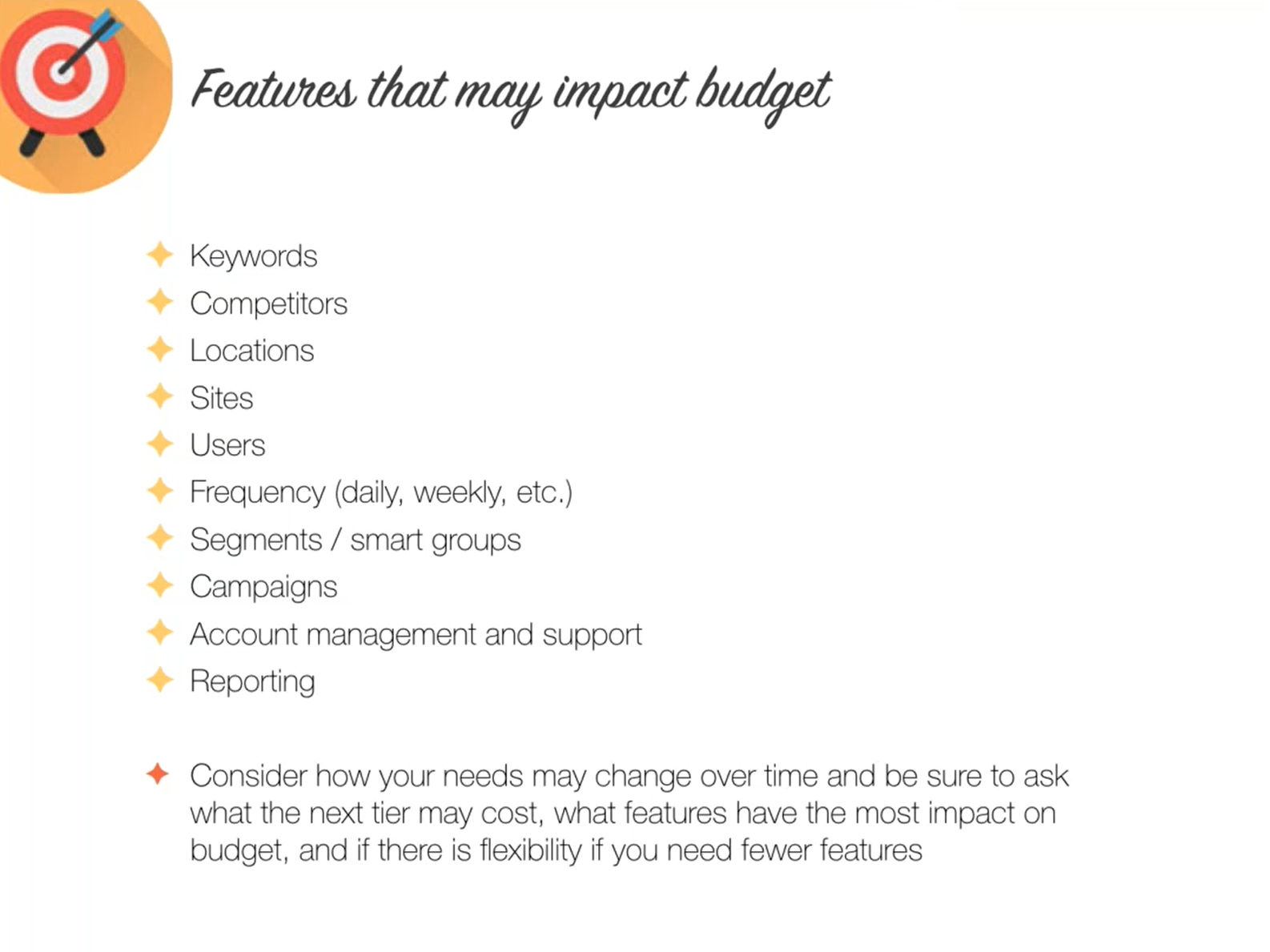Here at DemandSphere, we’ve not only created plenty of marketing platform demos, we’ve sat through several ourselves. And, many of our clients mention that they’ve had rocky starts on the platform demo process. So, how can you make the most of a platform demo with a potential tool or agency — and, how can you come out of it confident that you’ve made the right choice?
Choosing the right platform is a balancing act.
Your marketing team likely has a wide variety of diverse needs, often across segments or audiences. You may respond to this issue by 1) focusing on meeting one need with a single platform or 2) trying to find the platform that grazes every one of a whole list of needs. Both of these options can have bad results.
Looking for marketing software can feel a bit like looking for a new car. You probably know what you want and how much you want to spend. But, you need to look under the hood and kick the tires before making a decision that’ll work for you and for everyone in your organization who will need to drive that proverbial car.
So, what can you do before the demo to make the right choice? Prepare.
Before the demo, you need to do a little soul searching and strategic planning. Not only will this upfront work help you make the right choice, it’ll save you time and money. Your agency can demo the tools you need, onboard you correctly, and get your platform implemented quickly. You need to understand the full scope of needs to get yourself in the right platform and ready to work.
Ask yourself the following questions about your marketing needs:
What are you trying to accomplish?
What business goals are you actually hoping to achieve? Consider both the overarching organizational goals (like driving revenue) and your intended departmental contributions. The platform you choose should help you highlight progress toward all of these goals in workflow and reporting outputs. At the end of the day, the tools you pick should tie back to what your team, unit, or department is working on — and help you highlight those goals in the context of your bigger organization.
Make sure the goals you’re trying to accomplish are both measurable and clearly defined. Often, our clients bring us goals such as “I want to increase traffic.” We want that for you! How much of an increase do you hope to see in your traffic? Are there specific means you hope to use to bring in additional traffic? What does an increase in traffic do for your site, and where are you on finding keywords that will do that for you?
You should also consider goals from other teams or team members that can be accomplished through this platform. Because we do SEO, content marketing, and competitor intelligence, we find that DemandSphere is useful for individuals working outside the SEO team. People in product development, market intelligence, merchandising, or competitor review can benefit from using our platform. So, we want to make sure those folks are considered as part of the platform selection process.
What are you currently using to accomplish your goals?
Are you establishing a new goal that isn’t supported by current tools? Or, are you currently using another tool or simple human gruntwork? We often hear that people are doing manual keyword research, manual competitor research, or manual SEO tracking — and that these things could be easily automated by using an SEO platform. Maybe you’re looking for a way to consolidate multiple tools and cobbling together a time-consuming, less-than-cohesive analysis ecosystem. Or, maybe you have a platform you’d like to replace.
If you’re looking to replace an existing platform, what are your pain points?
Consider what is working in your current solution, and what isn’t working. Look at the complete feature and functionality list for your current solution, and assess which of those features and functionalities you currently use. Which ones are critical, must-have functions for a new platform? Which features are you paying for and not using? How does your current solution fit your needs?
Look through your needs, in regards to:
- Technology integrations
- Workflow setup and issues
- Scalability
- International and local capabilities
- How your tool keeps up with the market
- The efficacy of combined tools
- The value of your reporting suite
- White label capabilities
Does the reporting suite match your organizational and team goals? If you love the reporting — but feel you’re missing functionality and features — make note of what you like about that reporting. Don’t discount the possibility of staying with your current platform, either. If you find that you’re over-resourced in one area or tool, and under-resourced in another, you may simply be on the wrong plan for your org.
Who needs to use your platform?
A platform used by a single person — say, someone who uses those tools to fetch and distribute outputs — will look different than a platform used by multiple people across multiple teams. You’ll also want to consider whether external teams –contractors, agencies, or clients — will need to collaborate using the same tool. Do people need different permission levels — say, access to one part of a platform or view-only permission? Do your different stakeholders have different goals to be handled individually? DemandSphere’s platform, for instance, features unlimited custom dashboards, so that each user can create the dashboard they need to work effectively.
Which features impact your SEO platform budget?
Finally, one of the biggest questions of all: what can you spend, and how do you want to spend it? We get a range of budgets, from a few hundred dollars to “whatever it takes.” Budgeting is all about prioritization, so figure out your true needs — and determine where you’re willing to make cuts.
Consider how the features you need can impact your spend for the tool. In each level or package, your platform likely provides a set number of:
- Keywords
- Competitors
- Locations
- Sites
- Crawls and checks per day, month or year
- Segments or smart group
- Campaigns tracked
- Sessions with account managers or assistants
- Customizable or custom-built reports
Your industry, org, or clients may have unique needs: maybe you only have a handful of real competitors, but operate in lots of different locations. Or, maybe you really want to focus on a few campaigns, and don’t need to track every campaign that you launch. No matter who you are or where you work, pay special attention to pull frequency. DemandSphere offers daily pulls standard; some platforms require an upcharge for daily pulls. Even if you’re not in the platform every day, daily pulls are important: they give you 30 data points, instead of four or one, which you’ll get with weekly or monthly pulls.
Consider how your needs may change over time. Before you commit to a certain tier, sure to ask what the next tier may cost. Often, you’ll find there are economies of scale: going from tracking zero to 500 keywords will likely cost more than doubling the number of keywords you track If you’re concerned that you’re overbuying, ask whether there is flexibility if you decide you need fewer features. Marketing is dynamic: your platform should be, too.


